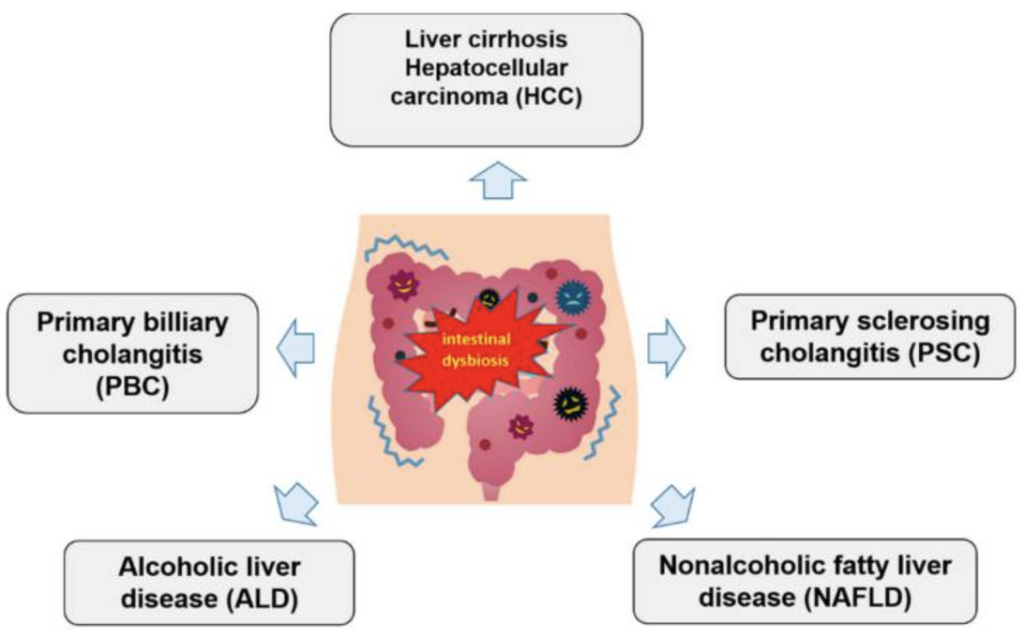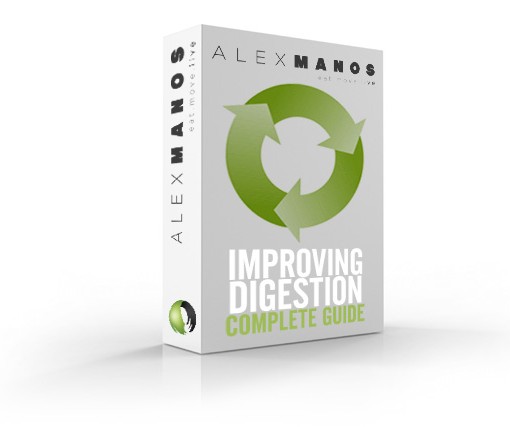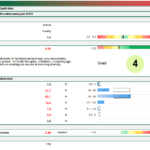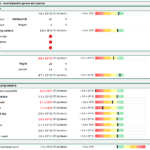Welcome to my blog post ‘Leaky Gut, Microbiome, And The Gut-Liver Axis: What You Need To Know?’.
You may also be interested in the section of my blog dedicated to gut health, click here, in particular:
- What Causes Brain Fog? And How To Get Rid Of It?
- Can Gut Health And Our Microbiome Affect Mental Health?
What Is The Gut-Liver Axis?
The gut-liver axis represents a close functional and bidirectional communication between the intestine and the liver.
From the physiological point of view, one of the most important links between the gut microbiome and other organs is the gut–liver axis.
For many years, it has been well known that the liver is continually exposed to both products of digestion and absorption, and ‘gut-derived factors’ including bacteria and bacterial components.
There is a direct pathway from the gut to the liver – the portal vein. This highlights the close anatomical and functional interaction of the gut and the liver. This axis plays an important role, protecting us against potentially harmful and toxic substances from the gut, thereby maintaining the balance of the immune system.
Watch to my interview with Kiran Krishnan from Microbiome Labs discuss leaky gut and microbiome diversity:
Remember we called the gut-liver axis a bidirectional pathway and that is because the liver not only receives microbiome input, but also influences the gut microbiome via bile acids and immunoglobulin A (IgA) antibodies, thereby playing an important regulatory role in the control of microbial populations
At healthpath we can test both the gut microbiome and leaky gut to understand how these may be influencing liver health and function. A sample of the Healthpath stool report is below:
Can Leaky Gut Cause Liver Issues?
Now that we have explained what the gut-liver axis is, you can see how leaky gut may cause liver issues.
The portal vein is the direct blood flow out from the intestine. When the intestinal barrier is damaged and shows increased permeability (aka leaky gut), the liver is automatically exposed to numerous toxic factors derived from the intestine, as well as to gut bacteria.
An existing imbalance in the gut microbiome would further amplify these processes.
Not only that but an imbalance in the gut microbiome is associated with an increase in intestinal permeability (leaky gut) too, and consequently, and this exposure of the liver to bacterial components can result in liver injury.
These bacterial components may act directly on liver cells or cells of the liver immune system such as Kupffer cells. The activated hepatic immune system causes pro-inflammatory pathways and may also influence antiviral pathways in liver cells.
What Liver Conditions Are Associated With Gut Health?
The following liver conditions have been associated with poor gut health:
- NAFLD
- ALD
- Immune-mediated liver diseases
- Liver cirrhosis
- Hepatic carcinogenesis

Med Sci (Basel). 2018 Sep; 6(3): 79
Can Probiotics Help The Liver?
Yes, probiotics containing Lactobacillus or Bifidobacterium have demonstrated some promising effects such as:
- Attenuation of liver fat accumulation
- Reduction of insulin resistance
- Limitation of oxidative and inflammatory liver damage
- Decrease in blood lipids
Small human studies showed a beneficial effect of probiotics on liver damage, along with a decrease in certain liver enzyme levels, and a reduction in total cholesterol and low-density lipoprotein cholesterol (LDL-C) concentrations.
Can Prebiotics Help The Liver?
Similarly, some prebiotics limited liver injury and reduced the levels of liver enzymes such as serum aminotrasfersases and also insulin.
What Are The Signs And Symptoms Of Leaky Gut?
There are numerous signs and symptoms associated with leaky gut and these include:
- Autoimmune conditions
- Systemic inflammation
- Chronic fatigue
- Skin conditions such as psoriasis
- Liver diseases
- Malabsorption
- Chronic nutrient deficiencies
Please be aware you can have leaky gut and have no symptoms, or certainly no symptoms you may typically associate with the condition (such as gut symptoms).
The Gut Microbiome, Leaky Gut, And NAFLD (non alcoholic fatty liver disease)
Nonalcoholic fatty liver disease represents the most common form of chronic liver disease that is closely linked to metabolic syndrome and increased insulin resistance.
Multiple risk factors contribute to the pathogenesis of NAFLD including:
- Genetic and dietary factors
- Distribution of body fat (in particular, the presence of visceral fat)
- Imbalances in gut microbiome
How Does The Microbiome And Leaky Gut Cause NAFLD?
Recent studies indicate a strong involvement of gut microbiome in the cause of NAFLD.
Typical changes observed in NAFLD are an increase in Bacteroidetes, a decrease in Firmucutes, and a rise in pro-inflammatory bacteria such as Proteobacteria and Enterobacteriaceae.
The process can be simply described as this: an underlying imbalance in the microbiome, alongside leaky gut, may cause liver inflammation, insulin resistance and changes in bile acid metabolism, which causes further leaky gut and inflammation of the liver.
For practitioners reading this I have provided the full mechanisms discussed in the research (1) below:
An underlying intestinal dysbiosis can cause hepatic steatohepatitis via the following events:
- Increase in hepatic inflammation leading to the development of steatohepatitis (due to leaky gut)
- Increase in insulin resistance
- Hepatic de novo lipogenesis (steatosis)
- Change in bile-acid metabolism and farnesoid X receptor (FXR) signaling
- Change in gut-barrier permeability (“leaky gut”) and induction of oxidative stress and inflammation by endogenous ethanol
- Decreased very-low-density lipoprotein (VLDL) assembly and secretion due to changed choline metabolism in the dysbiotic gut.
Loss of barrier integrity due to dysbiosis leads to a consequent increase in bacterial translocation and to metabolic endotoxemia, which are key pathophysiological events for hepatic TLR system activation, and thus, for a local hepatic and systemic inflammatory response
Gut Health, Probiotics and Hepatocellular Carcinoma
Hepatocellular carcinoma (HCC) is the fifth most common cancer and the third most common cause of cancer-related mortality worldwide. There is emerging evidence that the gut microbiome may have influence on the development and progression of this condition.
Studies have shown that manipulation of the gut microbiome with anti-inflammatory bacteria may prevent leaky gut and development of hepatocellular carcinoma in patients who are at risk..
Summary
- Imbalances in the gut microbiome can contribute to leaky gut.
- Leaky gut allows the entrance of bacteria and bacterial products in to the portal vein where they are sent to the liver.
- In the liver they cause liver inflammation.
- This can contribute to the liver issues discusses in this article.
References For ‘Leaky Gut, Microbiome And The Gut-Liver Axis: What You Need To Know’:
- Gut–Liver Axis: How Do Gut Bacteria Influence the Liver?: click here
- The gut-liver axis and the intersection with the microbiome: click here.
- The microbiome and autoimmunity: a paradigm from the gut-liver axis: click here.
- The gut microbiome and liver cancer: mechanisms and clinical translation: click here.
- Liver Steatosis, Gut-Liver Axis, Microbiome and Environmental Factors. A Never-Ending Bidirectional Cross-Talk: click here.
- Gut-Liver Axis, Gut Microbiota, and Its Modulation in the Management of Liver Diseases: A Review of the Literature: click here.
- The links between the gut microbiome and non-alcoholic fatty liver disease (NAFLD): click here.
- Targeting the gut-liver axis in liver disease: click here
- Microbiota, cirrhosis, and the emerging oral-gut-liver axis: click here.
- The gut-liver axis in liver disease: Pathophysiological basis for therapy: click here.
- Bilirubin in the Liver-Gut Signaling Axis: click here.
- Gut Microbiota and Complications of Liver Disease: click here.
- Role of Gut Microbiota in Neuroendocrine Regulation of Carbohydrate and Lipid Metabolism via the Microbiota-Gut-Brain-Liver Axis: click here.
- Gut microbiota and host metabolism in liver cirrhosis: click here.
- Gut microbiota: novel therapeutic target for nonalcoholic fatty liver disease: click here.
- The role of the gut microbiota in NAFLD: click here.
- Gut-liver axis, nutrition, and non-alcoholic fatty liver disease: click here.
- Gut microbiota in non-alcoholic fatty liver disease and alcohol-related liver disease: Current concepts and perspectives: click here.
- The Molecular and Mechanistic Insights Based on Gut-Liver Axis: Nutritional Target for Non-Alcoholic Fatty Liver Disease (NAFLD) Improvement: click here.
- Leaky Gut As a Danger Signal for Autoimmune Diseases: click here.
- Gut microbiome, liver immunology, and liver diseases: click here.
Alex is a certified Functional Medicine Practitioner (IFMCP) and has a MSc in Personalised Nutrition. He is also a breathwork facilitator with a background in personal training and massage therapy. He also runs The Resiliency Program - a 24 week program aimed at building physical, mental, emotional, and spiritual resilience.





